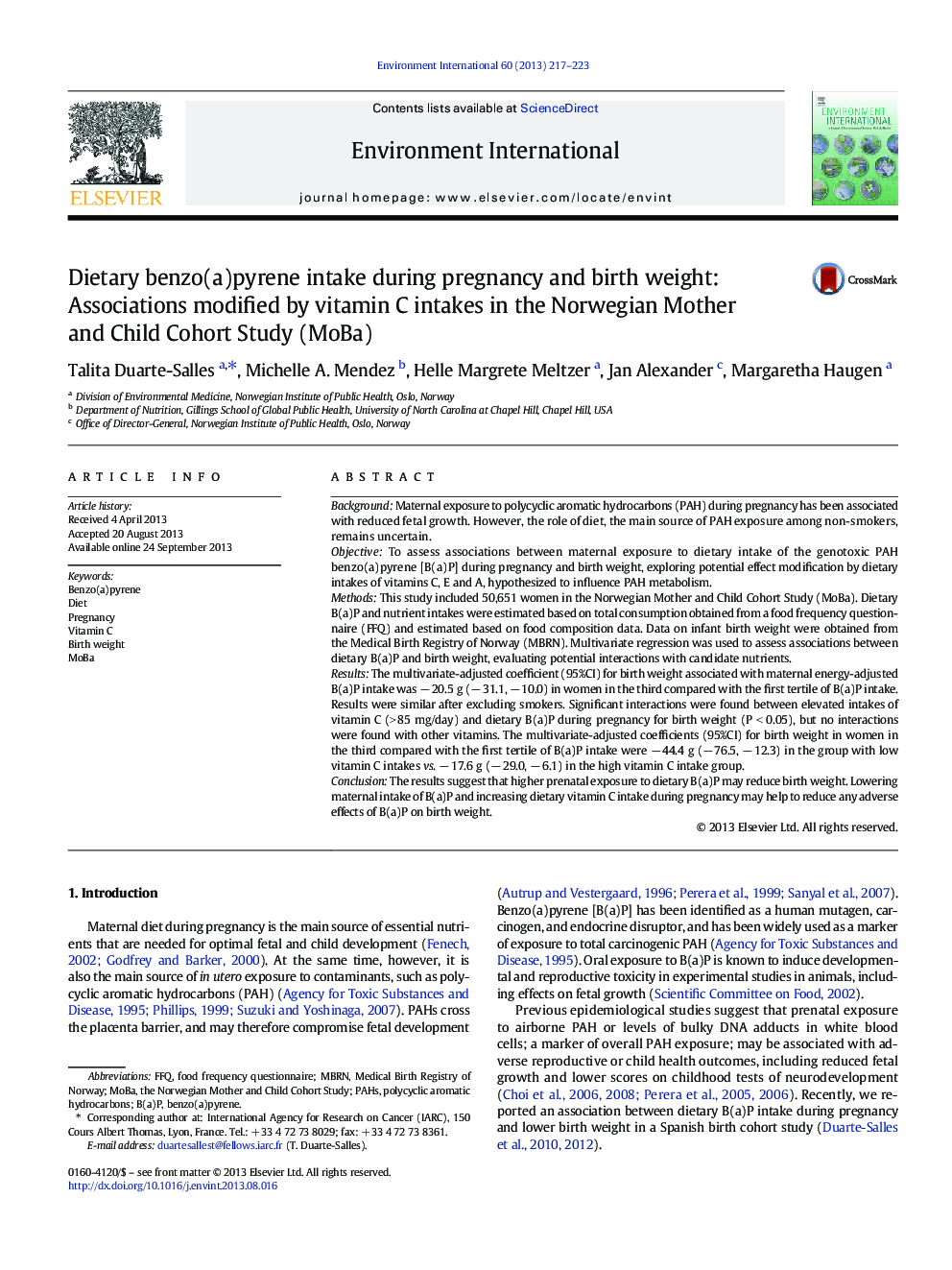| کد مقاله | کد نشریه | سال انتشار | مقاله انگلیسی | نسخه تمام متن |
|---|---|---|---|---|
| 6314213 | 1619068 | 2013 | 7 صفحه PDF | دانلود رایگان |

- Maternal dietary intakes of benzo(a)pyrene [B(a)P] in pregnancy and birth weight
- Subjects from the Norwegian Mother and Child Cohort Study (MoBa)
- Significant interactions between elevated vitamin C intakes and dietary B(a)P
- Prenatal dietary B(a)P intake may reduce birth weight in low vitamin C intake women.
BackgroundMaternal exposure to polycyclic aromatic hydrocarbons (PAH) during pregnancy has been associated with reduced fetal growth. However, the role of diet, the main source of PAH exposure among non-smokers, remains uncertain.ObjectiveTo assess associations between maternal exposure to dietary intake of the genotoxic PAH benzo(a)pyrene [B(a)P] during pregnancy and birth weight, exploring potential effect modification by dietary intakes of vitamins C, E and A, hypothesized to influence PAH metabolism.MethodsThis study included 50,651 women in the Norwegian Mother and Child Cohort Study (MoBa). Dietary B(a)P and nutrient intakes were estimated based on total consumption obtained from a food frequency questionnaire (FFQ) and estimated based on food composition data. Data on infant birth weight were obtained from the Medical Birth Registry of Norway (MBRN). Multivariate regression was used to assess associations between dietary B(a)P and birth weight, evaluating potential interactions with candidate nutrients.ResultsThe multivariate-adjusted coefficient (95%CI) for birth weight associated with maternal energy-adjusted B(a)P intake was â 20.5 g (â 31.1, â 10.0) in women in the third compared with the first tertile of B(a)P intake. Results were similar after excluding smokers. Significant interactions were found between elevated intakes of vitamin C (> 85 mg/day) and dietary B(a)P during pregnancy for birth weight (P < 0.05), but no interactions were found with other vitamins. The multivariate-adjusted coefficients (95%CI) for birth weight in women in the third compared with the first tertile of B(a)P intake were â 44.4 g (â 76.5, â 12.3) in the group with low vitamin C intakes vs. â 17.6 g (â 29.0, â 6.1) in the high vitamin C intake group.ConclusionThe results suggest that higher prenatal exposure to dietary B(a)P may reduce birth weight. Lowering maternal intake of B(a)P and increasing dietary vitamin C intake during pregnancy may help to reduce any adverse effects of B(a)P on birth weight.
Journal: Environment International - Volume 60, October 2013, Pages 217-223